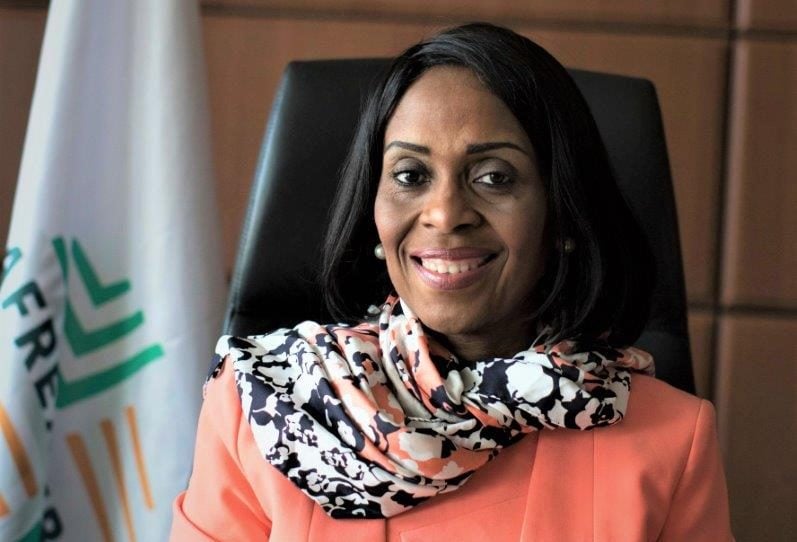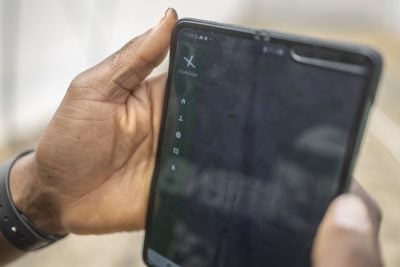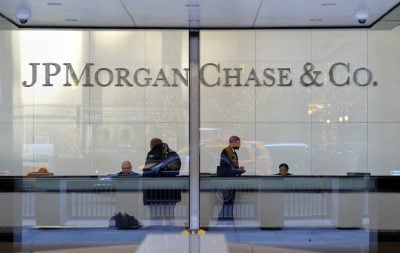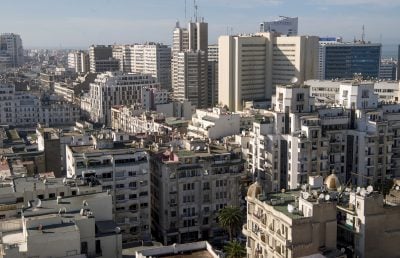As Kanayo Awani remembers it, the seeds of a continental shift in intra-African trade were sown from the moment the immediate past president, Benedict Oramah, assumed leadership of Afreximbank in 2015.
“If you listened to his speech at his inauguration,” recalls Awani, executive vice president at Afreximbank’s Intra-African Trade Bank, “he must have mentioned intra-Africa trade over 20 times. You could glean from that that he was going to, under his leadership, prioritise intra-Africa trade.”
At the time, intra-African trade was a marginal concern and not on the frontburner at the bank.
“It was probably about 3% of our portfolio. We did it perfunctorily. But with his vision, things changed and now we are at about 35%.”
A chat by the Nile
The turning point in Awani’s own mission to boost intra-African trade came in an unexpected setting.
“One day Professor Oramah asked me to come and see him. I was a director at that time for trade finance and branches. We had this conversation in his house; he used to live in a house with a fantastic view of the Nile. Downtown, Giza, and we were looking at the river Nile.”
Oramah’s words were direct and catalytic: “I want to introduce an intra-Africa trade initiative, and I want you to lead it. I’m going to empower you.”
Kanayo did not accept the challenge right away. She took a few days to mull over the charge.
“I gave him my answer a few days later. I said, “I’ll take the challenge. I want to do it.”
“At the beginning, we called it an initiative because we didn’t know which way or how to do it. It was a challenge. He had practically given me a blank piece of paper, a blank cheque. And he had said ‘Fill it up. This is what I want to do. We must grow intra-Africa trade. We have to support the implementation of the AfCFTA’.”
A new strategy to boost intra-African trade
With only an administrator by her side, Awani began crafting the bank’s first dedicated intra-African trade strategy.
“We worked with Deloitte. They studied the trade, studied the challenges, and the opportunities. And then we used that to start formulating the strategy that will then guide us.”
Three core pillars emerged to guide them; create; connect; and deliver.
Create meant focusing on value addition, expanding Africa’s processing and production capacity One of which we now see in the establishment and development of industrial parks. Especially around light manufacturers.”
Connection meant building market linkages in a continent where trade had been skewed through.colonial history.
And delivery meant ensuring markets were served by efficient distribution and delivery mechanisms, not least upgrades to transport infrastructure.
When pondering the challenges inherent in all three areas, Awani says that structural issues often overshadowed the availability of finance.
“We had to come up with a deliberate interventionist approach to intra-Africa trade. Of course, I’m coming from a business development background. Finance is not the only problem here…There are other non-tariff barriers like lack of access to trade and market information.”
Kanayo’s vision extended to supply-side economics, product beneficiation, and value addition.
“We are a continent that is so rich in raw commodities… but of what use is it for Ivory Coast to sell cocoa beans to Ghana or Nigeria? No use. That’s why the greatest form of intra-Africa trade today is manufacturing goods.”
Banking beginnings
Before Afreximbank, Awani spent 17 years at Citibank, her “first job after National Youth Service… I imbibed the best-in-class training in banking. I was trained.”
Even though she had joined CitiBank as a fresh graduate, Awani quickly rose through the ranks.
“I was probably the first management associate in Citibank from within the bank. It was sheer hard work… Eventually I left as a vice president looking after commercial and corporate industries.”
Her tenure coincided with seismic shifts in Nigeria’s industrial landscape, especially the decline and collapse of the textile industrial, an experience that informs her support of manufacturerers today.
“I was there when the textile industry in Nigeria collapsed… I was managing them, Indian and Chinese companies. I did see at the time how companies can need support.”
After almost two decades at Citibank, Awani began angling for the next frontier.
“I told you I love challenges. The challenge was no longer there. There was a restlessness in my spirit.”
That restlessness led her to Harvard University’s Kennedy School, where she pursued a mid-career master’s degree in public administration, majoring in international trade and finance. She earned a fellowship in public policy and management.
To make time for Harvard, Kanayo took a sabbatical, hedging her bets while keeping her role.
“You know, sometimes you’re not sure of the future. So, I wanted to hedge against that, and I kept the job.”
Launching the Intra-African Trade Fair
In a textbook case of preparation meeting opportunity, the Afreximbank opportunity opened after her stint at Harvard and with the role at Afreximbank came the intra-African trade break.
Ten years on, the intra-African trade strategy has become a cornerstone of Afreximbank’s continental agenda.
Looking back over those ten years, she can highlight a raft of innovative initiatives that have been born from that conversation in that house in downtown Giza and they include the Intra-African Trade Fair, the Pan-African Payment and Settlement System (PAPSS), industrial parks and African Quality Assurance Centres (AQAC), the Creative Africa Nexus (CANEX) and the Global Africa movement.
Walking to the Afreximbank pavilion at the 2025 Intra-African Trade Fair in Algiers, a woman hailed Kanayo Awani as “Mama IATF.”
Kanayo says that the huge event is one of her most significant achievements, but she acknowledges that it felt daunting at the beginning.
“I’m a banker, so how do you organize a trade fair? And not even just a trade fair… an Intra-African Trade Fair that brings the whole continent together?”
The more they planned for the inaugural trade fair, the more overwhelming the project appeared to be.
“Some days I didn’t know where to go but on my knees. To say, what did I get myself in? Because it just kept growing and growing and growing.”
The 4th edition recorded attendance from 132 countries made up of 958 buyers and 2,148 exhibitors with a record $48.3 billion in trade and investment deals signed.
From virtual showcases to automotive expos, from creative industries to policy roundtables, the fair became a continental convergence point for governments dealing with the private sector in ways they hadn’t done before.
Supporting the creative industries
For many, the inclusion of creative industries in a trade fair hosted by a financial institution might seem unconventional. But for Kanayo, it was essential because as “somebody who’s been involved in trade policy for a while, I always knew that you have to focus on trade in services.”
“You can’t just talk about goods. And remember, we did the intense studies… What are we trying to do? To take advantage of our low-hanging fruits. To take advantage of our competitive and dynamic comparative advantage as a continent.”
That advantage, she says, lies in Africa’s youth.
“By 2050, 70% of our population will be young. But you also see the dreary nature of those young people… You see people who are forced into the Mediterranean seas and the Sahara.”
Yet, despite the challenges she sees hope and brilliance.
“These young people are not only young, but they’re also talented. I’m Nigerian. Sometimes I release the pressure by just looking at those comedy sketches that come out of it. It’s the abundance of talent in music, abundance of talent in fashion… You look at all of that on the continent and say, ‘You know what? You must take advantage and harness and exploit what you’ve got.’”
Awani’s vision for the creative industry also goes beyond financing.
“Finance is critical. But we need to do other things. We need to build capacity. We need to focus on capacity building to make them bankable. To give them the ability to commercialise their talents.”
The IATF provides a unique stage for CANEX has become a platform for that transformation.
“If you go to the creative event here, it’s masterclasses. It’s teaching, as well as entertainment. But what else does a platform like this offer? It’s market access.”
She is also clear and focused on the broader purpose sharing that beyond trade the IATF is for reputation management for Africa because “the trade fair is also for image-making.”
Monetising culture
Awani’s approach to the creative industries is expansive and strategic.
“We throw everything at it. We try to solve problems left, right, and center… What Afreximbank has is execution finesse. For us there’s no point talking about it. If you can do something about it, do it” she says.
The range of support spans layered financing models from trade to debt finance; a newly incorporated company to manage IP and fund filmmakers; facilitation programmes for market access, grants and sponsorships; and a $1bn film fund.
Explaining the mission of the latter, Awani says: “we realised that filmmakers are sometimes hamstrung by distributors… So we decided we will have a company that will serve as a repository of Africa’s intellectual property and we’ll fund them.”
Fashion is another area of focus.
“We’ve supported over 100 fashion designers from across the continent and the Caribbean… Some of them have got incredible deals.”
In music, CANEX has backed the One Drum EP, a fusion between Africa and Brazil featuring members of the Marley family and artists from across Africa.
But Kanayo Awani is clear-eyed about the challenges and the need for creatives to become financially literate.
“Fame is not a collateral,” she says. “We’re banks. We need to see documents. If it’s too informal, we can’t talk to it.”
To solve this problem, Afreximbank invests in masterclasses, pitch deck training, and financial literacy – even in sports.
“One of our protégés got drafted into the NBA” Awani announces with pride.
Women and the power of focus
The rise of women entrepreneurs is the catalyst of a quiet revolution at the heart of the IATF’s success something Kanayo Awani sees it as a natural outcome of the continent’s economic structure.
Asked whether IATF is deliberate in prioritising women she says “it’s a yes and no answer… but it is also an obvious one. SMEs are the engines of our economy. And a huge number of SMEs – that’s where you’re finding women. You support a woman, you support a family, you support a community, you support countries, you support the continent.”
What dvice would Awani give to a young woman seeking guidance?
“I can only tell you what has worked for me… Just remain focused. Don’t be too distracted by everything else that goes on.”
She points to preparation, discipline, and intentionality as key to her own rise to the top.
“You have to position yourself for opportunities… Otherwise, the next man will take it.”
Want to continue reading? Subscribe today.
You've read all your free articles for this month! Subscribe now to enjoy full access to our content.
Digital Monthly
£8.00 / month
Receive full unlimited access to our articles, opinions, podcasts and more.
Digital Yearly
£70.00 / year
Our best value offer - save £26 and gain access to all of our digital content for an entire year!
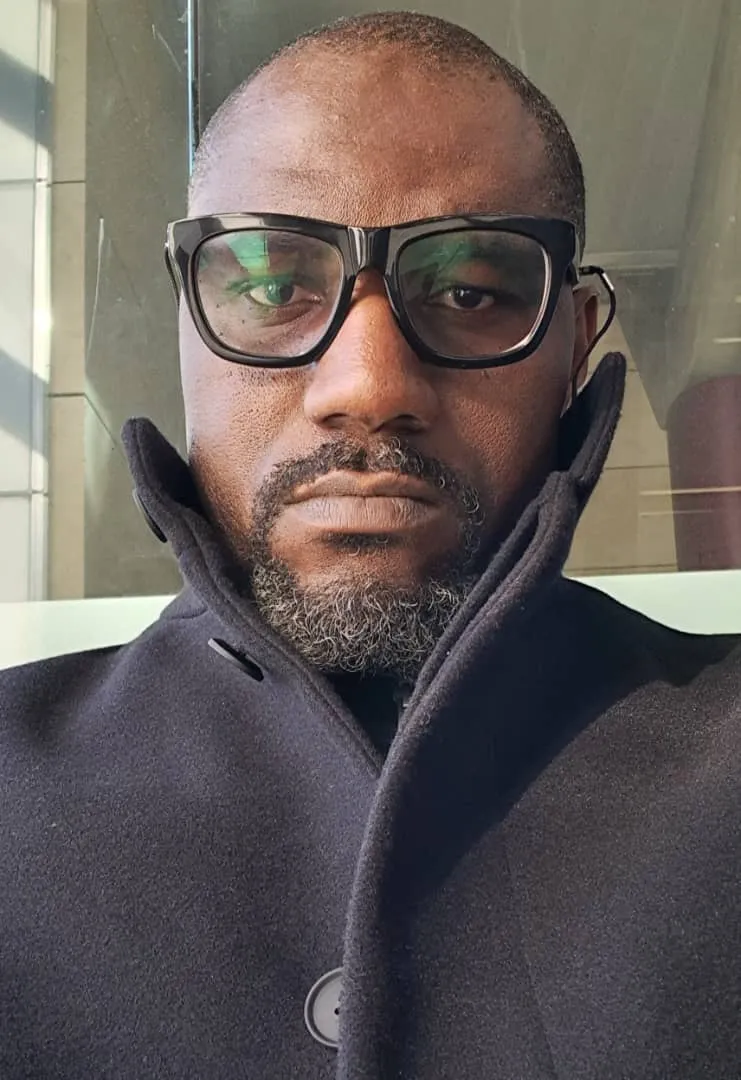
 Sign in with Google
Sign in with Google 